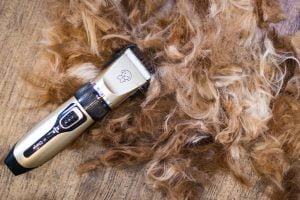
Bathing and Shampooing: Essential Techniques and Products for Dog Grooming at The Rich Groomer

Introduction
Keeping your furry friend's coat in top condition is an essential aspect of dog grooming. Regular brushing not only maintains the beauty of your dog's coat but also plays a vital role in their overall health and well-being. In this comprehensive guide, we will delve into the best practices for brushing dogs of different coat types, provide valuable insights from The Rich Groomer dog groomers in Sacramento, and share tips on preventing matting or shedding. Get ready to learn how to keep your four-legged companion looking and feeling their best!
1. Understanding the Importance of Dog Grooming
Before delving into the specifics of bathing and shampooing, let's briefly discuss the significance of regular grooming for dogs. Grooming not only helps maintain a clean and attractive appearance but also promotes healthy skin, coat, and overall well-being. It allows you to detect any skin issues, parasites, or abnormalities early on, ensuring prompt veterinary attention if necessary. Grooming sessions also provide an opportu
2. The Basics of Dog Bathing
Properly bathing your dog requires attention to detail and a gentle approach. Here are the essential techniques for a successful dog bath:
1. Preparing for the Bath:
Gather all the necessary bathing supplies such as dog-safe shampoo, conditioner, towels, and a non-slip mat. Brush your dog's coat beforehand to remove any loose hair or tangles.
2. Choosing the Right Water Temperature:
Use lukewarm water to make your dog comfortable during the bath. Extreme temperatures can be unpleasant or even harmful to their skin.
3. Wetting and Soaping:
Wet your dog thoroughly, starting from the neck down. Apply a dog grooming shampoo, ensuring it is specifically formulated for their coat type and skin condition. Massage the shampoo gently, avoiding the sensitive areas such as eyes and ears.
4. Rinsing:
Thoroughly rinse your dog, making sure all the shampoo is removed. Leftover residue can cause skin irritation or dryness
5. Conditioning:
If recommended for your dog's coat type, apply a suitable dog grooming conditioner after rinsing. Allow it to sit for a few minutes before rinsing it off completely.
6. Drying:
Towel-dry your dog to remove excess water, ensuring a warm and safe environment. Use a hairdryer on a low heat setting if your dog is comfortable with the noise and sensation. Otherwise, allow them to air dry.
3. Choosing the Right Shampoo and Conditioner
Selecting the appropriate dog grooming shampoo and conditioner is vital for maintaining a healthy coat and skin. Here are some factors to consider when choosing these products:
1. Coat Type:
Different coat types require specific shampoos and conditioners. For example, dogs with dry skin may benefit from moisturizing formulas, while those with sensitive skin might need hypoallergenic options.
2. Skin Conditions:
If your dog has specific skin conditions, consult with a veterinarian or professional groomer to determine the most suitable products. Medicated shampoos can help with conditions like allergies, fleas, or dermatitis.
3. Allergies:
If your dog has allergies, look for hypoallergenic shampoos and conditioners that are free from common allergens such as artificial fragrances, dyes, or harsh chemicals.
4. Natural Ingredients:
Consider using dog grooming products that contain natural ingredients, as they are often gentler on the skin and coat. Ingredients like oatmeal, aloe vera, or chamomile can provide soothing effects.
5. Scent and Fragrance:
Choose a shampoo and conditioner with a mild and pleasing scent. Avoid overpowering fragrances that may irritate your dog's sensitive sense of smell.
6. Avoid Harmful Ingredients:
Steer clear of shampoos or conditioners that contain harsh chemicals like parabens, sulfates, or artificial preservatives. These can potentially cause skin irritation or other adverse reactions.
Frequently Asked Questions
The frequency of bathing depends on various factors such as coat type, activity level, and overall hygiene. In general, bathing once every 4-6 weeks is suitable for most dogs. However, certain breeds or dogs with skin conditions may require more frequent baths as recommended by a professional groomer or veterinarian.
No, it is not recommended to use human shampoo on dogs. Human shampoos are formulated for the pH level of human skin, which differs from that of dogs. Using human shampoo can disrupt the natural balance of your dog’s skin, leading to dryness, irritation, or other skin issues.
If your dog is fearful of baths, introduce them to the bathing process gradually. Start by getting them comfortable in the bathroom environment, then slowly introduce them to water and bathing equipment. Use positive reinforcement, treats, and praise to create a positive association with bath time.
It’s important to use a shampoo specifically formulated for puppies as their skin is more delicate than adult dogs. Puppy shampoos are gentler and milder, designed to suit their sensitive skin and coat. Avoid using adult dog shampoos on puppies.
Conclusion
Bathing and shampooing are essential aspects of dog grooming, ensuring your furry friend's coat stays clean, healthy, and free from skin issues. By following the proper techniques and using the right dog grooming shampoo and conditioner, you can create a pleasant grooming experience for both you and your dog. Remember to consider factors like coat type, skin conditions, and natural ingredients when choosing grooming products. At The Rich Groomer, we prioritize your dog's well-being, offering expert guidance and top-quality grooming services. Keep your pup fresh, clean, and happy with the right bathing routine and products!

